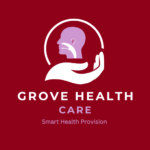The Cawthorne-Cooksey exercises are a set of vestibular rehabilitation exercises designed to help improve balance, reduce dizziness, and alleviate other vestibular-related symptoms. Here’s a comprehensive overview:
History and Development
Developed by: The exercises were developed by Dr. Terence Cawthorne and Dr. Harold Cooksey in the 1940s.
Original purpose: The exercises were initially designed to help soldiers who had suffered from vestibular damage during World War II.
Goals and Benefits
-
1. Improve balance
Enhance balance and stability by strengthening the vestibular system.
-
2. Reduce dizziness
Decrease the frequency and severity of dizziness episodes.
-
3. Alleviate symptoms
Relieve other vestibular-related symptoms, such as nausea, vomiting, and headaches.
-
4. Enhance overall function
Improve overall functional abilities, including walking, climbing stairs, and performing daily activities.
Exercises and Techniques
-
1. Eye movements
Perform eye movements, such as focusing on a point and then shifting gaze to another point.
-
2. Head movements
Move the head from side to side, up and down, and in a circular motion.
-
3. Body movements
Perform movements, such as standing on one foot, walking on a balance beam, or doing squats.
-
4. Visual-vestibular exercises
Combine visual and vestibular stimuli, such as watching a moving object while moving the head.
-
5. Progressive exercises
Gradually increase the difficulty of exercises as symptoms improve.
Indications and Contraindications
-
1. Indications
Vestibular disorders, such as benign paroxysmal positional vertigo (BPPV), labyrinthitis, and vestibular migraine.
-
2. Contraindications
Certain medical conditions, such as severe visual impairment, severe cognitive impairment, or unstable cardiovascular disease.
Precautions and Considerations
-
1. Consult a healthcare professional
Before starting the exercises, consult with a healthcare professional, such as a physical therapist or an otolaryngologist.
-
2. Start slowly
Begin with gentle exercises and gradually increase the intensity and difficulty.
-
3. Monitor progress
Regularly monitor progress and adjust the exercises as needed.
Effectiveness and Research
-
1. Studies
Numerous studies have demonstrated the effectiveness of the Cawthorne-Cooksey exercises in improving vestibular function and reducing symptoms.
-
2. Evidence-based practice
The exercises are widely recognized as an evidence-based practice for vestibular rehabilitation.
Share Post On:
Recent Posts
-
Technique of Incision and Drainage of Septal Hematoma/Septal Abscess
-
Upper Aerodigestive Tract Foreign Body Impaction
-
Incision and Drainage of Hematoma Auris
-
Rigid Bronchoscopy for Retrieval of Foreign Bodies in Children
-
Foreign Body Impaction in the Larynx, Trachea, and Bronchi
-
Leadership Position is a Tool, not a Trophy
-
Carcinoma of the Oropharynx
-
Peritonsillar Abscess
-
Ethics of Doctor-Patient Relationship
-
Doctor-Patient Relationship Case Scenarios
-
Asymmetrical Tonsils and Approach to Evaluation and Management
-
Nasal Polyposis
-
Rigid Oesophagoscopy and Complication
-
Anatomy of Oesophagus
-
Stridor, Snoring, Stertor And Wheezing: How They Compare
-
Temporomandibular Joint (TMJ)
-
Otoacoustic Emissions
-
Tympanometry
-
Functional Endoscopic Sinus Surgery (FESS)
-
Tracheostomy
-
Clinical Voice Test (CVT) for Hearing Loss
-
Acute Epiglottitis And Approach To Management
-
Synoptic Overview Of Nasopharyngeal Carcinoma
-
Prioritizing Support For People With Disabilities Over Unhealthy Competitions That Marginalise The Downtrodden
-
Otitic Barotrauma
Categories
Get in Touch
Read doctor-produced health and medical information written for you to make informed decisions about your health concerns.


